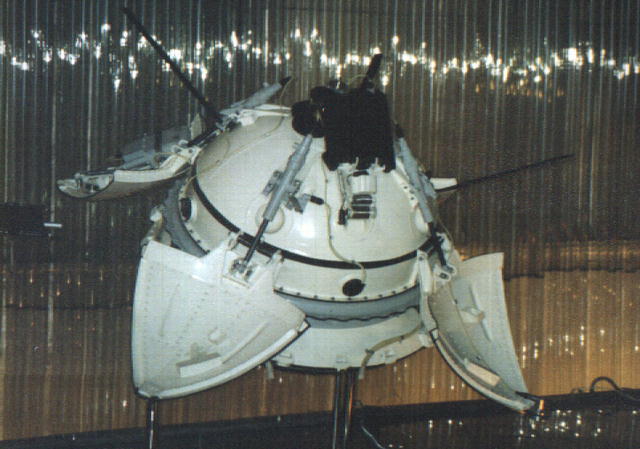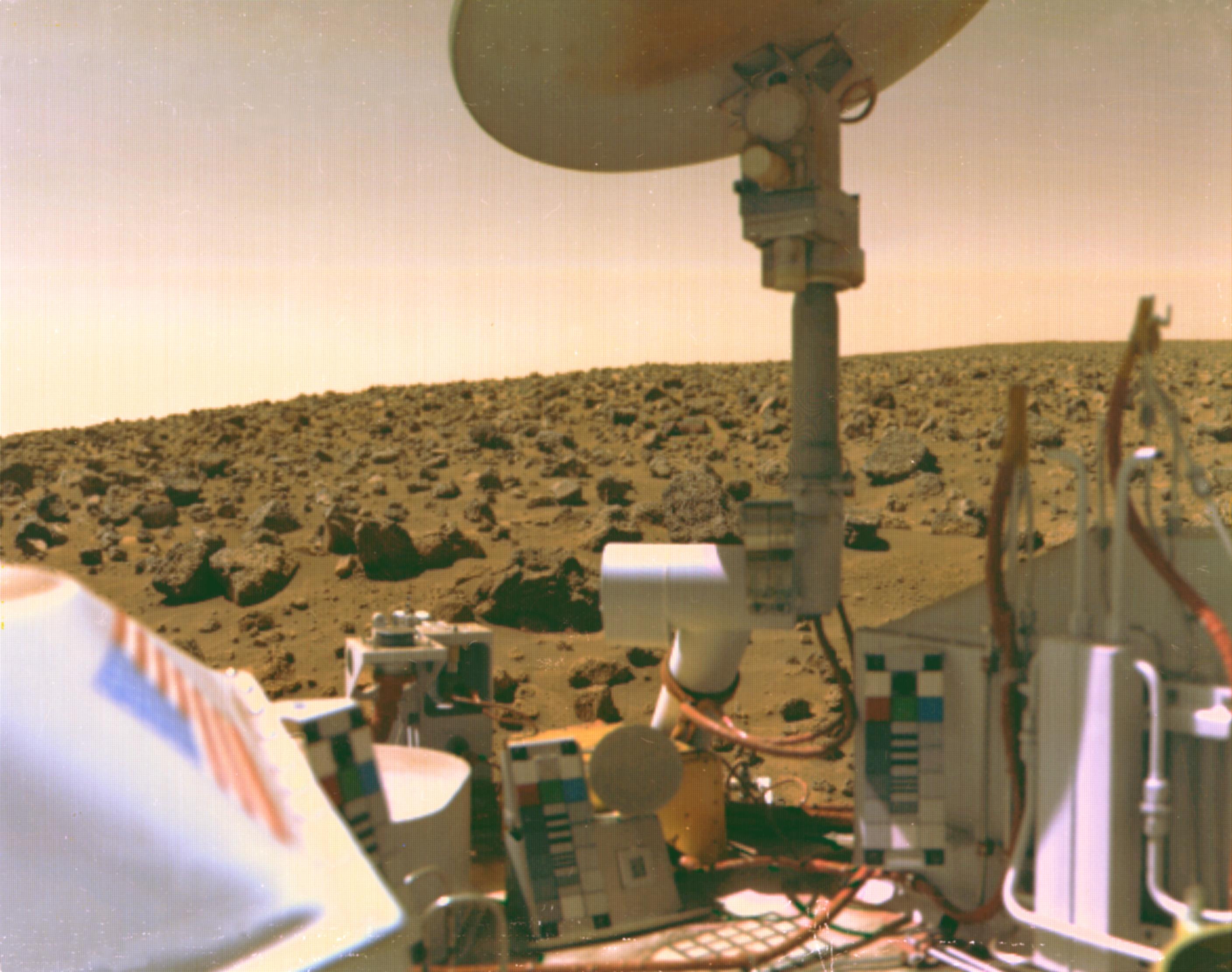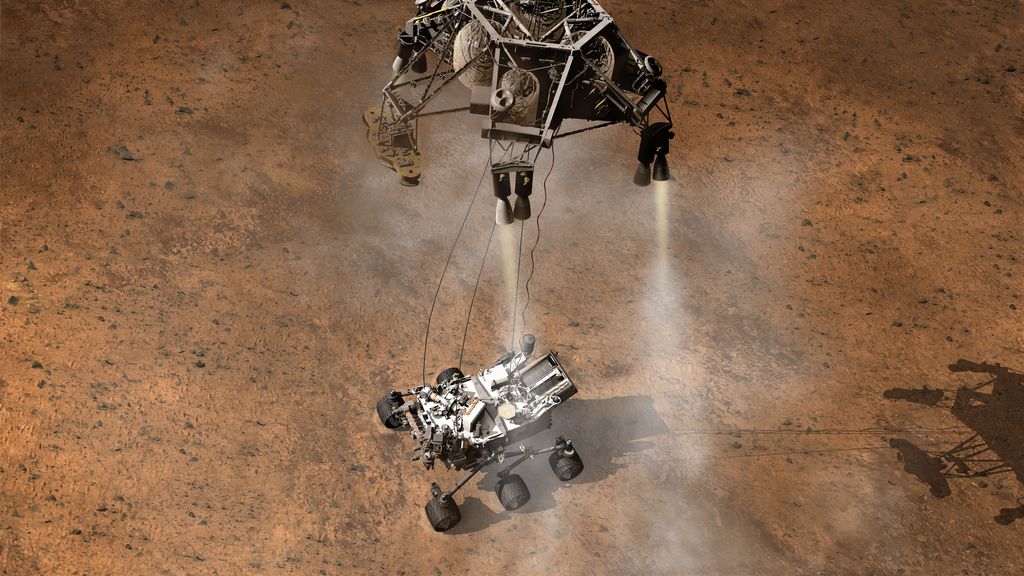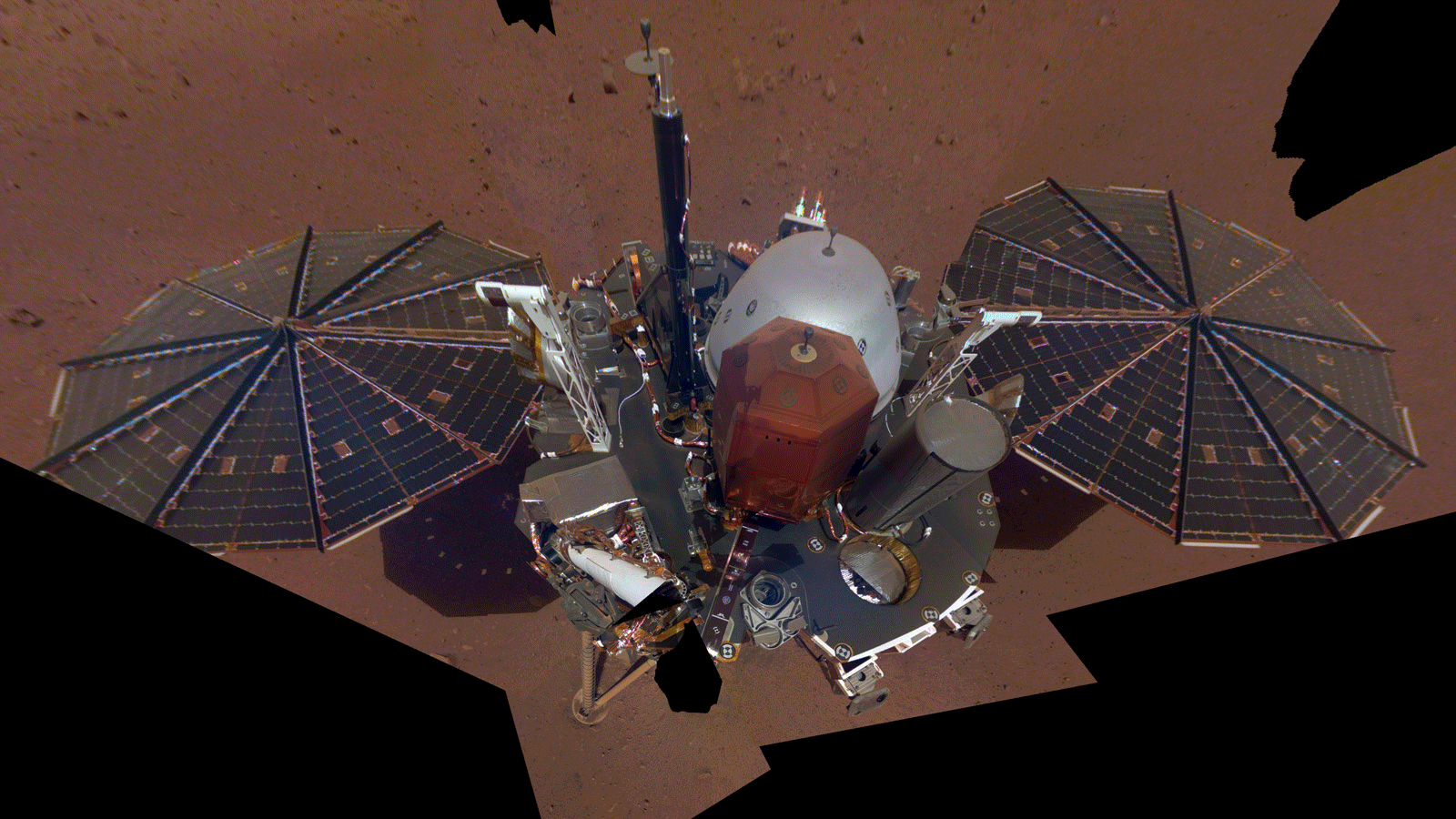what was the first thing to land on mars
The best (and worst) Mars landings of all fourth dimension
Reaching Mars (opens in new tab) is a difficult and unforgiving try, with footling room for error. A big proportion of the l-odd missions launched toward Mars have been lost due to failed components, rocket glitches or grievous errors that sent probes crashing into the Martian surface or missing the planet altogether.
Landing missions (opens in new tab) are especially tricky to the long fourth dimension delay between Mars and Earth communications, the thin Martian atmosphere, and the fact that spacecraft and their components must survive several months in space earlier making it to the surface. We have been very lucky with many landing missions, but not all of them made them downwardly.
Related: Mars, the spacecraft graveyard (opens in new tab)
Hither'southward a look at the best (and worst) Mars landings of all fourth dimension:
First on Mars

Mars 2, a lander built by the former Soviet Union, has the double-edged distinction of being the first human-built object ever to bear on down on the Red Planet. Launched in tandem with its sister craft Mars 3 in 1970, the spherical 1-ton Mars two lander was well-nigh the size of a kitchen stove and designed to parachute to the Martian surface and use rockets for concluding braking.
Despite surviving the long trip the Mars — a major feat in itself— the probe crashed into the Martian surface somewhere west of the Hellas basin while a major grit storm churned across the planet.
20 seconds, then silence

Like its sister craft Mars 2, the Soviet Union's Mars three landing mission is a combination of engineering accomplishment and inexplicable failure. The lander appears as the conical top of the Mars 3 orbiter mothership in this image.
The probe launched in 1970 and landed successfully on Dec. 2, 1971 in the Martian uplands of Terra Sirenium after descending through the same dust tempest that thwarted its predecessor Mars two. Merely twenty seconds subsequently beginning its kickoff photographic scan, Mars 3's Television set signal went silent for skilful.
Beagle 2 gets lost
On Christmas 24-hour interval 2003, the British-congenital Beagle 2 lander plummeted through the Martian atmosphere with the hopes of Europe on its tail, only to vanish without a trace.
Shaped like an oversized pocket lookout man, Beagle 2 hitched a ride to the Red Planet aboard Europe's Mars Limited orbiter, but crash landed on the planet rather than bouncing to a cease with airbags. A lower than expected atmospheric density may take caused the probe's parachute and airbags to deploy too belatedly, an investigation subsequently found.
Mars Polar Lander

British and Russian researchers weren't the just ones to send space probes to Mars only to have them neglect at the finish. NASA's Mars Polar Lander, launched in January 1999, crashed just before landing near the planet's south pole in December of that year due to an engineering flaw.
Some of the probe's leftover tools and equipment were used to build NASA'due south new Mars lander, Phoenix, which landed successfully in May 2008.
The Viking success

The first successful landing on Mars came on July twenty, 1976, when NASA's Viking 1 lander touched downwards in Chryse Planitia (The Plains of Golf). The massive i,270-lb (576-kilogram) lander dropped from an orbiting mothership to make a three-point landing using a parachute and rocket engine.
Viking one's three biology experiments constitute no clear evidence of Mars microbes. The lander was powered by a plutonium decay-powered radioisotope thermoelectric generator and went silent on Nov. 11, 1982, half-dozen years subsequently completing its initial 90-twenty-four hour period mission.
Viking's second invasion

Soon after Viking 1'south success, NASA landed on Mars over again on Sept. iii, 1976 with Viking 2.
The sis send to Viking 1, Viking 2 touched downwards on the broad, flat plains of Utopia Planitia, where information technology snapped photos of morning time frost and — like its predecessor — constitute sterile soil that held no articulate evidence of microbial life. The lander shut down in 1980.
Red Planet roving

On July 4, 1997, NASA celebrated U.S. Independence Mean solar day in way by landing the showtime mobile probe on the Red Planet.
The Mars Pathfinder Lander used a parachute and airbags to land on Mars and so deployed Sojourner — a small, six-wheeled rover the size of a microwave oven that explored nearby terrain. A total success, the mission concluded with a final transmission on Sept. 27, 1997.
Spirit'south big bounce

The success of Mars Pathfinder and its Sojourner rover led to a larger, bolder Mars landing on January. four, 2004, when NASA's golf cart-sized Spirit rover bounced to a stop inside the wide Gusev Crater.
Spirit spent more than 6 years — far beyond its initial 90-solar day mission — exploring Mars before going silent in March 2010.
Opportunity knocks, history answers

The twin of NASA's Spirit rover, the robotic explorer Opportunity, landed January. 25, 2004 and, while it was only expected to last xc days on the Scarlet Planet'southward surface, the rover ended upward lasting five,111. The rover stopped communicating with NASA following a global dust tempest on Mars, and the mission was declared over in 2019.
Opportunity landed on the flat plains of Meridiani Planum, which sits on the side of Mars opposite Gusev crater. Amazingly, the rover landed in a small crater, where a nearby outcrop contained evidence that the region was once soaked with water in ages past.
Rising from the ashes

The Phoenix lander touched downward on May 25, 2008 and used some spare instruments and equipment salvaged from the lost Mars Polar Lander project.
The solar-powered Phoenix landed almost the Martian n pole, where it used a robotic arm-mounted scoop to dig for buried water water ice and on-board instruments to determine whether the region may once take been habitable for microbial life. The mission lasted about seven months before the harsh Mars winter ended the lander's activities.
Overcoming 'seven minutes of terror'

NASA's flagship Curiosity rover finished a never-before-executed complex landing sequence on Aug. 6, 2012, flawlessly stepping through parachute deployment and a "sky crane" deployment to settle into the surface in Gale Crater.
The mission nevertheless remains highly active in early on 2021 and has a lot of milestones under its belt. These include finding abundant prove of water and water-formed rocks, measuring methane at the surface, detecting different types of organics, and continuing to climb a Martian mountain called Mount Sharp (Aeolis Mons). The rover's blueprint (and some of its instruments) have been adapted for the Perseverance rover mission, which is expected to country on February. 18, 2021.
So long, Schiaparelli

The European Space Agency's Schiaparelli lander, part of the ExoMars mission to Mars, launched to the Red Planet on March 14, 2016.
The Schiaparelli landing demonstrator for the European Space Agency was supposed to prepare for afterwards work in the ExoMars exploration program. Conflicting data on the onboard estimator, however, caused Schiaparelli to crash during landing on March 14, 2016. It spun rapidly (and unexpectedly) during descent, slamming into the surface then fast the the black scar left behind was visible from orbit in high-definition NASA Mars Reconnaissance Orbiter pictures.
Probing the Martian interior

NASA'due south InSight Mars landing took identify on November. 26, 2018, allowing the first spacecraft devoted to probing the Crimson Planet interior to begin its work. The mission has measured numerous marsquakes and continues to gather data to better understand the germination of Mars and other rocky planets.
The only major failure of the mission was a "mole" or heat probe that was designed to move nether the surface; harder than expected regolith frustrated more than two Earth years of efforts to dig more than than a few inches. NASA abandoned the attempt in early 2021, but the mission has been approved for an extended mission as long as its power reserves last.
Upcoming Mars landings
The story of landing on Mars is not complete.
NASA's Perseverance rover is gearing upwards for a landing on Feb. 18, and Prc's Tianwen-i mission, which arrived in Mars orbit in Feb 2021, is expected to deploy a rover to the Martian surface in mid-2021.
In 2022, the European Space Bureau and Russia's Roscosmos agency will launch the ExoMars rover Rosalind Franklin. That rover, originally scheduled to launch in 2020, was delayed due to technical issues.
Follow us on Twitter @Spacedotcom and on Facebook.
Join our Space Forums to keep talking space on the latest missions, night sky and more! And if you accept a news tip, correction or comment, permit us know at: customs@space.com.
Source: https://www.space.com/10930-mars-landings-red-planet-exploration.html#:~:text=The%20first%20successful%20landing%20on,a%20parachute%20and%20rocket%20engine.

0 Response to "what was the first thing to land on mars"
Post a Comment